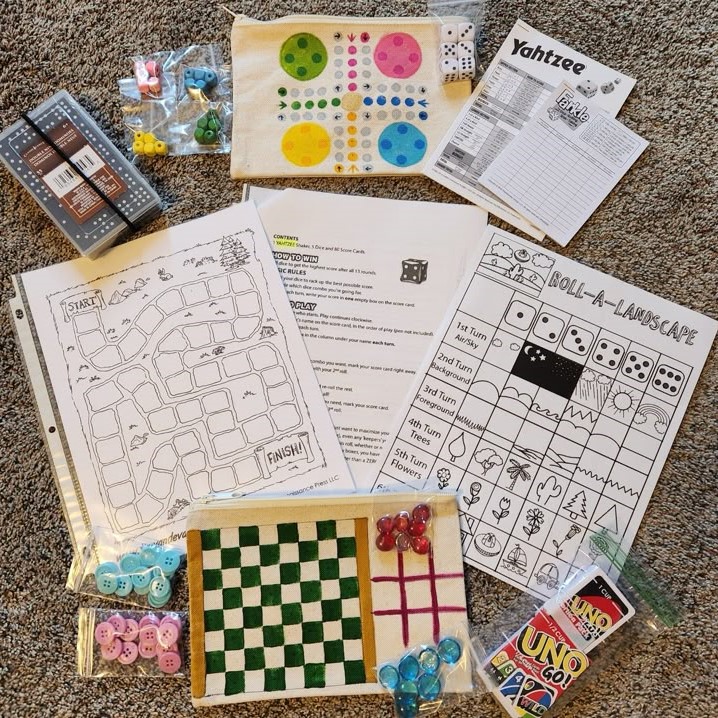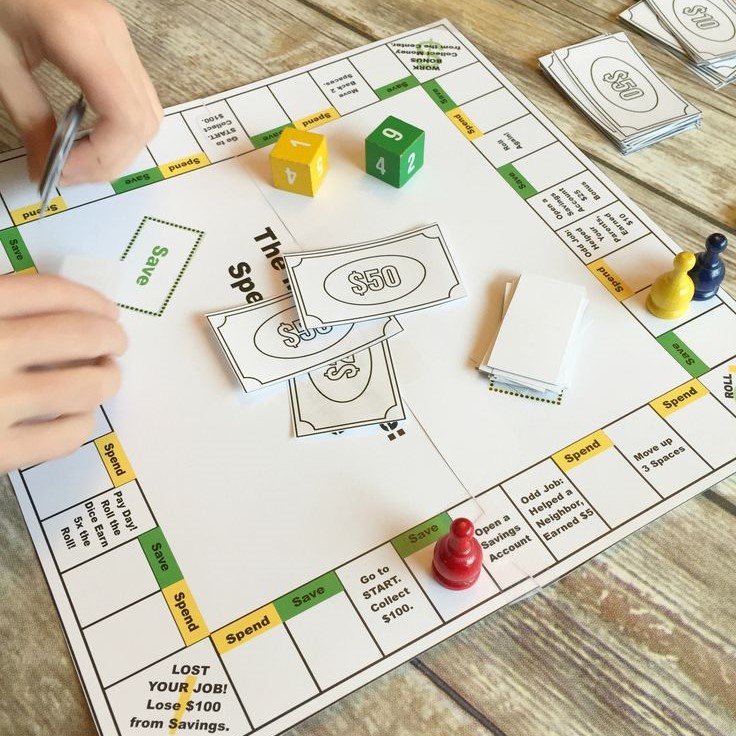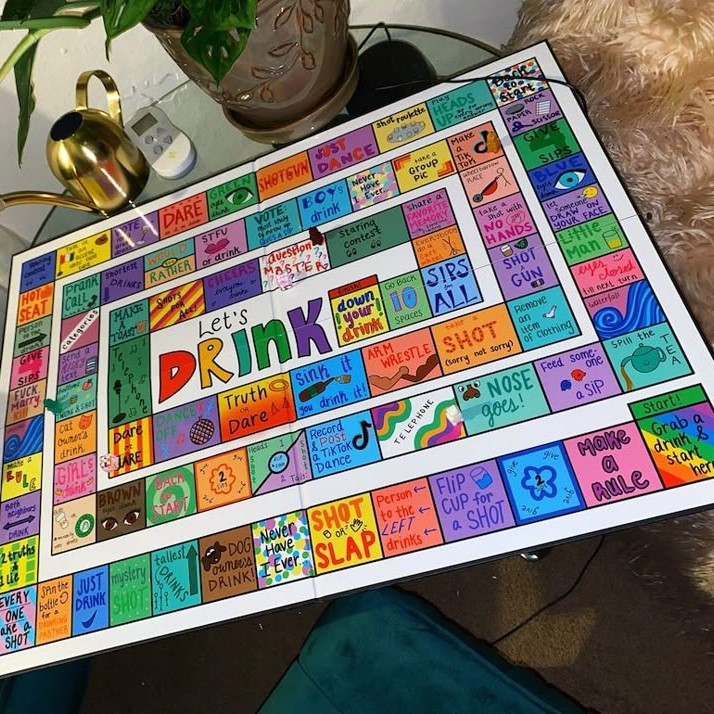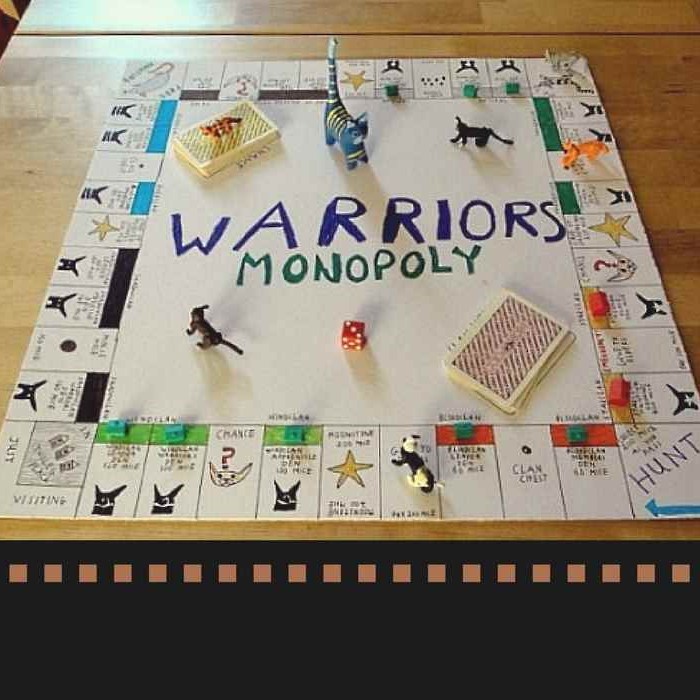Introduction to Board Game Design
How to make a board game? Designing a board game is an exciting creative challenge. It allows you to turn ideas into fun experiences. Whether casual or intricate, every game has the chance to captivate players.
Why Create Your Own Board Game?
Creating your own board game is a rewarding process. It lets you share your imagination with others. You can design stories, themes, or unique gameplay mechanics. By creating games, you control the journey players will experience.
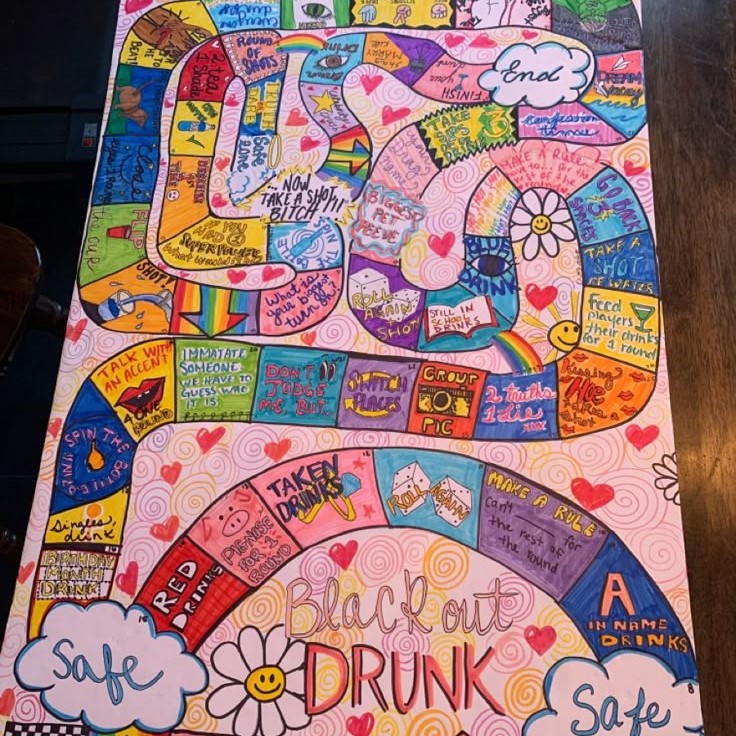
Board game design also builds problem-solving skills. You’ll think critically to develop rules, balance gameplay, and engage players. It’s a hobby that combines creativity with logical thinking.
Benefits of Designing Board Games
Designing a board game comes with many benefits. First, it’s a platform to express your ideas. You craft a world where players discover and interact with your concepts. This fosters creativity and growth.
Second, it can strengthen bonds between players. A well-made game brings people together and encourages social interaction. Whether family nights or friendly gatherings, good games create lasting connections.
Third, successful games can bring financial rewards. If your design resonates, it can sell well on the market. This turns your passion into profit while reaching audiences worldwide.
Finally, you leave a personal legacy. A game is both art and entertainment, something people may cherish for years to come. Making board games is not just productive but deeply fulfilling.
Developing the Concept for Your Game
How to make a board game? Creating a unique and enjoyable board game starts with a solid concept. This involves understanding your players and defining the game’s genre and theme. Doing this ensures that your game appeals to the right audience and creates a memorable experience. Let’s explore the fundamental steps.
Identifying Your Target Audience
Knowing your audience is crucial for designing a successful board game. Consider these factors:
- Age Group: Design complexity and themes based on whether your game targets kids, teens, or adults.
- Player Preferences: Gauge if your audience enjoys strategy, luck-based, or narrative-driven games.
- Group Size: Decide if the game is best for solo play, small groups, or larger parties.
- Skill Levels: Determine if your audience prefers challenges for beginners, intermediate players, or experts.
Once you understand your audience, you can tailor the game’s mechanics, tone, and difficulty level. Addressing their interests will increase engagement and ensure enjoyment.
Choosing the Game Genre and Theme
Choosing the right genre and theme sets the foundation for your game’s identity. Here’s how to approach this:
- Select a Genre:
- Strategy games focus on planning and tactics. These appeal to logical thinkers.
- Party games emphasize fun and social interaction, perfect for groups.
- Cooperative games let players work as a team, fostering camaraderie.
- Abstract games rely on mechanics over storytelling, like chess or checkers.
- Pick a Theme:
- Choose a theme that complements the genre. For instance, a mystery theme suits a strategy genre.
- Unique themes (e.g., outer space, ancient civilizations, or fantasy realms) make games memorable.
- Consider the artistic and immersive potential of your chosen theme.
- Blend Creativity with Trends:
- Look for inspiration in market trends but don’t simply copy existing games.
- Aim for originality, as fresh ideas captivate players and stand out.
Developing a well-thought-out concept driven by your target audience, genre, and theme lays the groundwork for an engaging and successful game. Taking time to focus on these early steps will streamline the rest of your design process.
Designing Gameplay Mechanics
How to make a board game? Good gameplay mechanics are the foundation of any successful board game. They dictate how players interact, strategize, and resolve challenges. Thoughtfully crafted mechanics make games engaging and keep players coming back. Here’s how to effectively design gameplay mechanics for your board game.
Key Elements of Gameplay Mechanics
When designing gameplay mechanics, focus on these essential elements:
- Player Actions:
- Define what players can do during their turn. Examples include moving, collecting, or trading.
- Ensure actions feel meaningful and impactful to the game’s outcome.
- Game Flow:
- Decide the sequence of play (turn-based, simultaneous, or free-for-all).
- Use mechanics to maintain a balance between player interaction and game pacing.
- Conflict and Resolution:
- Introduce challenges or conflicts to engage players and add tension.
- Create clear, fair rules to resolve conflicts (e.g., dice rolls, card draws).
- Winning Conditions:
- Establish how players can win (e.g., earning points, achieving objectives).
- Keep the path to victory achievable but challenging.
- Replayability:
- Incorporate elements that make the game feel new each time, like random scenarios or choices.
Balancing Complexity and Accessibility
Balancing complexity and accessibility ensures your game is fun for various audiences. Here’s how to manage this balance:
- Limit Overcomplication:
- Avoid mechanics that overwhelm players or slow the game unnecessarily.
- Focus on clarity and simple, intuitive rules.
- Create Depth Without Overload:
- Offer opportunities for strategizing without intimidating new players.
- For example, introduce gameplay layers that are easy to learn but hard to master.
- Test with Varied Audiences:
- Playtest with both casual and seasoned players. Gather feedback on clarity and playability.
- Simplify mechanics as needed to appeal to a broader audience.
- Add Clear Rulebooks and Visual Aids:
- Design rulebooks that explain mechanics in an easy-to-follow way.
- Include examples, diagrams, and quick-reference guides.
Designing Rules and Objectives
Rules and objectives are the backbone of your board game. They guide players and shape their experience. Here’s how to design them effectively:
- Write Clear and Concise Rules:
- Avoid ambiguities. Test rules to ensure players interpret them correctly.
- Break down rules into small, digestible sections.
- Define Objectives Early:
- Make the main goal easy to understand from the start.
- Offer secondary objectives to provide variety and strategy.
- Encourage Fair Play:
- Ensure all players have equal chances of success. Avoid overly rewarding early advantages.
- Focus on Engagement:
- Keep every turn interesting to prevent downtime and boredom.
- Include surprises, decisions, or challenges that keep players hooked.
- Iterate Based on Playtesting:
- Adjust and refine rules to fix confusion or imbalances during playtests.
- Gather input from testers to see how the gameplay feels in real situations.
By carefully designing gameplay mechanics, balancing complexity, and crafting clear rules, you create a game that is both fun and memorable. These steps are essential for learning how to make a board game that stands out.
Prototyping Your Board Game
Prototyping your board game brings your concept to life. It helps test ideas and improve gameplay.
Materials and Tools for Prototyping
Using the right materials is crucial for creating a functional prototype. Consider the following essentials:
- Cardstock and Paper:
- Use sturdy paper for cards or game boards.
- Draft multiple layouts for flexibility.
- Markers and Pens:
- Draw or write on pieces to design symbols or rules.
- Keep colors vibrant to enhance visibility.
- Dice and Coins:
- Incorporate dice or coins for random elements.
- Use them to test mechanics like chance.
- Scissors and Adhesive:
- Cut out custom shapes for tokens or boards.
- Use glue or tape to assemble parts.
- Special Tools (Optional):
- Use 3D printing for unique components.
- Explore craft tools to refine your prototype.
Creating Your First Draft
Building the first draft puts ideas into playable form. Follow these steps:
- Sketch Basic Layouts:
- Plan the board’s design and player progression.
- Organize key areas for actions or conflicts.
- Write Preliminary Rules:
- Define clear instructions for gameplay.
- Keep them simple to test early concepts.
- Create Test Tokens and Cards:
- Focus on simple placeholders over polished designs.
- Ensure each piece fulfills its role effectively.
- Assemble Components:
- Bring together the board, cards, tokens, and dice.
- Check for alignment between parts.
- Keep It Basic:
- Don’t worry about perfection. Test ideas first.
- Adjust the complexity as you refine.
Playtesting and Refinement
Playtesting is the most important stage for prototyping. It reveals flaws and improves gameplay.
- Gather a Small Group:
- Start playtesting with a few friends or family.
- Choose testers who fit your target audience.
- Observe Gameplay:
- Note player actions, confusion, or feedback.
- Identify rules or mechanics that seem unclear.
- Track Results:
- Record wins, losses, and frustrations.
- See how players approach strategies or challenges.
- Iterate After Feedback:
- Simplify or modify problematic rules.
- Test these changes in the next session.
- Refine Components:
- Adjust sizes or designs for better usability.
- Ensure easy handling of tokens or cards.
Prototyping bridges the gap between ideas and reality. Fine-tune every detail to make it engaging and playable.
Visualizing the Board Game
Designing the visual elements of your board game is a critical step. These elements create immersion and enhance gameplay experience. From the game board to artwork and components, the aesthetics of your game must engage players while maintaining functionality.
Designing the Game Board
The game board is the heart of your board game. Here’s how to design it effectively:
- Choose the Board Style:
- Decide if your board will be flat, modular, or dynamic.
- Modular boards add variety, while flat boards keep gameplay simple.
- Organize Layouts Clearly:
- Place zones, paths, or areas in logical order.
- Avoid clutter; ensure every section has a purpose.
- Include Functional Design Elements:
- Add grids, markings, or regions for logical gameplay.
- Ensure necessary sections are accessible to every player.
- Test for Usability:
- Check the board’s proportions match its purpose.
- Prototypes should help refine its arrangement.
- Enhance the Theme:
- Incorporate design motifs from your game’s story or genre.
- Use colors and icons that strengthen thematic connections.
Artwork and Illustrations
Artwork sets the tone and mood of your board game. It should be unique, eye-catching, and thematic.
- Establish a Style:
- Choose art styles that match your game’s theme (e.g., cartoon, realistic, or abstract).
- Select Color Schemes:
- Use harmonious colors fitting your genre (e.g., dark tones for mystery).
- Avoid overwhelming palettes; keep colors complementary.
- Create Key Visuals:
- Design vivid game box art to grab attention.
- Illustrate characters, events, or elements to enrich storytelling.
- Maintain Clarity:
- Ensure artwork doesn’t confuse players or overshadow functional elements.
- Work with Artists:
- Collaborate with talented illustrators to execute your vision.
- If needed, use stock art for initial designs.
Token, Card, and Component Design
Tokens, cards, and components tie gameplay to visuals. They need to balance aesthetics and utility.
- Design Functional Tokens:
- Pick shapes and sizes that are easy to handle.
- Ensure tokens match their purpose visibly.
- Create Clear Cards:
- Use simple layouts for readability.
- Organize text and graphics systematically.
- Choose Quality Materials:
- Opt for durable cardstock, plastics, or wood for components.
- Focus on usability and long-term durability.
- Connect Components to Theme:
- Tailor designs to fit your game’s theme and mechanics closely.
- Playtest Usability:
- Test every component for comfort and accessibility during gameplay.
Visualizing your board game involves creativity and precision. A thoughtful design entices players and ensures smooth gameplay.
Manufacturing and Publishing Your Board Game
Creating a board game doesn’t end with design and prototyping. The next step focuses on manufacturing and publishing, making your game available to players. Let’s break this process into manageable parts.
DIY vs Professional Printing Options
Choosing between DIY and professional printing depends on your budget, goals, and scale.
- DIY Printing:
- Great for small-scale production or prototypes.
- Use home printing for cards and simple components.
- Purchase blank boards and customize them.
- Affordable but may lack high-quality finishes.
- Professional Printing:
- Ideal for mass production and polished products.
- Offers high-quality materials like custom boards and durable cards.
- Costs are higher but ensure a professional result.
- Partner with experienced printing companies for a smooth workflow.
Evaluate your needs and decide which route fits your goals and target audience.
Finding Manufacturers and Publishers
If you plan to mass-produce, partnering with manufacturers and publishers is crucial.
- Selecting Manufacturers:
- Research companies specializing in board game production.
- Look for experience with custom components and unique designs.
- Compare quotes while considering quality, cost, and reliability.
- Request samples to evaluate material and print quality.
- Approaching Publishers:
- Present your game to publishers who deal with your genre.
- Create an engaging pitch with a prototype and rulebook.
- Show off your game’s unique features and market potential.
- Understand their terms, royalties, and rights before signing agreements.
Working with trusted partners guarantees your game reaches players in its best form.
Marketing and Promotion Strategies
Successful games need effective marketing and promotions to stand out in a competitive market.
- Leverage Social Media:
- Share sneak peeks, artwork, and playtesting videos.
- Build an audience through consistent and engaging posts.
- Use Crowdfunding Platforms:
- Launch campaigns on platforms like Kickstarter to raise funds.
- Offer attractive rewards to incentivize support.
- Attend Conventions and Events:
- Showcase your game at board gaming expos.
- Let players test it and provide feedback on the spot.
- Collaborate with Influencers:
- Partner with board game reviewers and enthusiasts.
- Their reviews can expand your game’s reach.
- Sell Strategically:
- Use online gaming stores, e-commerce platforms, or direct sales.
- Start locally before expanding to global markets.
By manufacturing smartly, choosing the right partners, and marketing wisely, your board game can achieve both quality production and market success.
Tips for a Successful Board Game Creation
Creating a board game involves creativity, testing, and strategy. Following best practices can boost your success.
Common Mistakes to Avoid
Avoiding mistakes in the early stages can save time and resources later. Here are common pitfalls:
- Overcomplicating Mechanics: Keep rules simple. Avoid overwhelming players with too many mechanics or details.
- Skipping Audience Testing: Test your game with your target audience often. This ensures it resonates with players.
- Imbalanced Gameplay: Ensure fairness for all players. Prevent one player from dominating due to poor balance.
- Ignoring Feedback: Listen to players’ honest opinions. Ignoring feedback can lead to flawed designs.
- Rushing to Publish: Refine your game before releasing it. Hasty launches hurt your reputation.
Learning from Feedback and Trends
Feedback and trends help you improve and align with market expectations. Here’s how to learn effectively:
- Playtest Regularly: Test with diverse groups. Identify unclear rules or unbalanced gameplay quickly.
- Study Market Trends: Research popular board games. Understand what themes or mechanics sell well.
- Incorporate Feedback Wisely: Prioritize consistent feedback from multiple testers. Avoid reacting to single opinions.
- Adapt to Changing Preferences: Update your game to fit new trends or shifting player interests when relevant.
- Leverage Online Reviews: Watch board game reviews for ideas to enhance your game’s appeal.
Staying Creative and Innovative
Innovation sets your board game apart. Here are tips to encourage creativity:
- Brainstorm Frequently: Regularly jot down ideas and experiment with unique mechanics or themes.
- Combine Genres: Blend unexpected elements, like strategy with humor, to create fresh experiences.
- Seek Inspiration: Look to books, movies, and real-life events for creative concepts.
- Break Traditional Norms: Challenge conventional board game structures. Offer something players haven’t seen before.
- Collaborate With Others: Partner with creative individuals to bring diverse ideas into the design process.
By avoiding mistakes, learning from feedback, and staying creative, you set your board game up for success.
Conclusion: Your Journey in Creating a Board Game
In conclusion, knowing how to make a board game involves creativity, planning, and a willingness to iterate. From brainstorming ideas to playtesting and marketing, each step is crucial for establishing a fun and engaging game.
By following the guidelines provided in this article, you can successfully navigate the design process, creating a product that brings joy and entertainment to others. Embrace the journey, enjoy the process, and let your imagination run wild as you create your unique board game. With dedication and effort, your creation can become a favorite in the gaming community!
